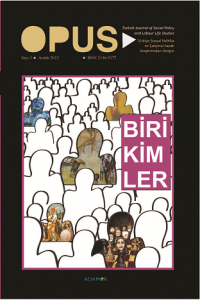Abstract
It has been seen that the studies that focus on the nature of the city accelerated fort he last decades. It is better to notice city transformation policies in Turkey for this acceleration. The most powerful one of these debates is West architecture does fit with Turkish culture and traditions. This sight makes traditional architecture popular in Turkey. In this context the interest towards Islamic architecture with the discovery of Islamic city nature inspired the cities which will be built after city transformation. In this study, it will be focused on the sociological readings of Islamic city fabric with the role of the Islamic architecture in the relationship between social, political and economic entities.
Abstract
Son yıllarda akademik çevrelerde şehrin doğasına yönelik yapılan çalışmaların arttığı görülmektedir. Bu artışta Türkiye’nin gündeminde olan kentsel dönüşüm politikalarının etkisini göz ardı etmemek gerekir. Ayrıca bu tartışmalarda hakim görüş olan, Batı tarzı mimarinin Türk toplumunun kültürüne ve geleneklerine aykırı olduğu düşüncesi, geleneksel mimariye olan merakı da cezp etmektedir. Bu bağlamda İslam şehirlerinin doğasının bir kez daha keşfiyle birlikte İslam mimarisine duyulan ilgi, kentsel dönüşüm sonrasında yeniden kurulacak şehirler için ilham kaynağı oluşturmaktadır. Bu çalışmada İslam şehirlerinin sosyal dokusuna dair sosyolojik okumaların yanı sıra İslam mimarisinin toplumun sosyal, siyasal ve ekonomik ilişkilerinin mahiyetini tayin edici rolü üzerinde durulacaktır.
Details
| Other ID | JA64JK68NE |
|---|---|
| Authors | |
| Publication Date | July 23, 2016 |
| Published in Issue | Year 2012 Volume: 2 Issue: 3 |

